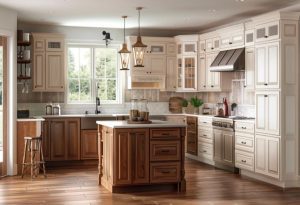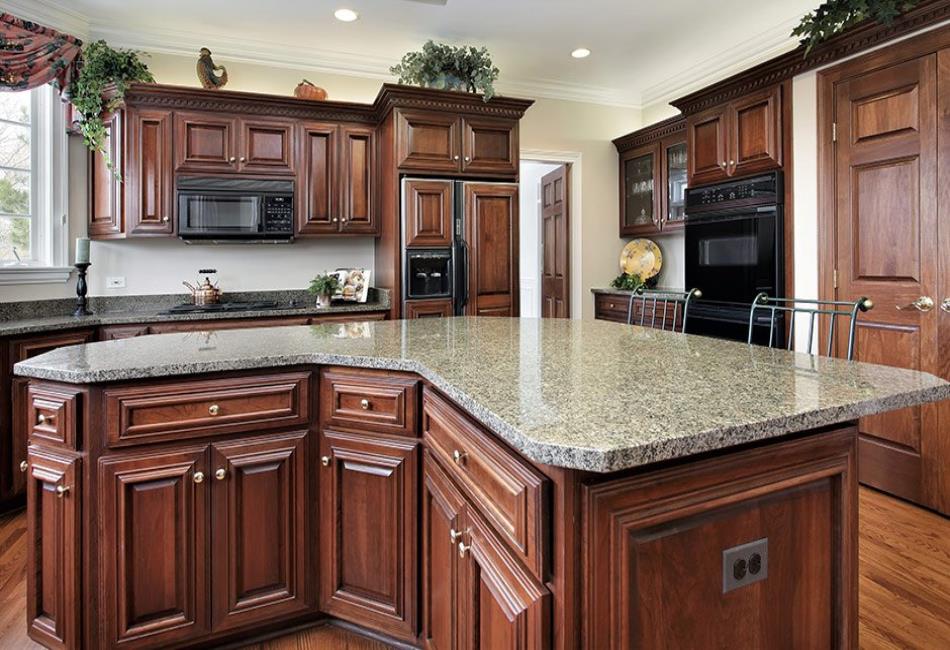In any home, maximizing storage while maintaining a stylish aesthetic can be a challenge, notes leading property management company pmbyproactive.com. For many, corners are awkward spaces that often go underutilized, creating design gaps in kitchens, living rooms, bathrooms, and even offices. One of the best ways to turn these corners into functional and visually appealing areas is by incorporating corner cabinets. These cabinets offer a range of design solutions that can fit into various home styles, all while providing valuable storage and enhancing the look of a room. Let’s explore the different types of corner cabinets, their benefits, and tips for selecting the best option for your space.

Types of Corner Cabinets
There are various types of corner cabinets, each designed to serve different purposes and fit unique room layouts. Here are some popular options:
- Lazy Susan Cabinets: Often found in kitchens, lazy Susan cabinets feature rotating trays that make it easy to access items stored in the deep corners of the cabinet. This design is particularly useful for storing pots, pans, and other cooking essentials, eliminating the need to reach or dig deep into the cabinet.
- Diagonal Corner Cabinets: Diagonal corner cabinets have a unique angled design that fills the corner space without protruding into the room. These cabinets are commonly used in kitchens to store small appliances or everyday dishes.
- Corner Drawers: Some cabinets feature corner drawers instead of traditional cabinet doors. These drawers pull out diagonally, allowing access to the entire space and maximizing storage without the need for additional mechanisms like rotating trays.
- L-Shaped Cabinets: L-shaped cabinets, often seen in living rooms or bathrooms, fit into the corner to create a seamless look. These cabinets are excellent for storing items such as toiletries, books, or decorative pieces while keeping them accessible.
- Floating Corner Cabinets: Floating corner cabinets are mounted on the wall, creating a visually appealing space-saver that doesn’t take up floor space. They work well for displaying decor items, books, or even kitchenware.
- Corner Pantry Cabinets: Large and spacious, corner pantry cabinets are typically used in kitchens to store non-perishable foods, snacks, and other essentials. They offer ample storage and often feature pull-out shelving or deep shelves to maximize capacity.
Benefits of Corner Cabinets
Corner cabinets bring both functional and aesthetic benefits, making them a valuable addition to almost any room in the house. Here are some key advantages:
1. Space Optimization
Corners can often go underutilized, particularly in rooms with square or rectangular layouts. Corner cabinets make the most of this space, turning previously unusable areas into efficient storage spaces. In small kitchens, corner cabinets are especially valuable, as they can help prevent clutter and open up the rest of the kitchen for cooking and movement.
2. Improved Accessibility
Corner cabinets often incorporate designs that improve accessibility to items stored in the back, which can be challenging to reach in standard cabinets. Features like rotating trays in lazy Susan cabinets or diagonal drawers allow you to store and retrieve items effortlessly, without bending or stretching.
3. Aesthetic Appeal
Well-designed corner cabinets can add a unique architectural element to a room. From sleek, modern styles to traditional wood finishes, corner cabinets are available in a wide variety of designs to match any home decor. Some corner cabinets even come with glass doors or decorative elements that add a touch of elegance to the room.
4. Customizable and Versatile
Corner cabinets come in many customizable options. Whether you need a tall cabinet for storing items in your bathroom or a compact floating shelf in your living room, there’s a corner cabinet to suit every need. Many homeowners choose to customize their corner cabinets with additional shelves, lighting, or even charging stations for electronics.
5. Multi-Room Functionality
Corner cabinets aren’t just for kitchens; they can be used in any room of the house. In living rooms, they serve as beautiful storage for books, electronics, and decorative items. In bathrooms, corner cabinets can keep toiletries and towels organized. Even bedrooms can benefit from corner cabinets for storing personal items, linens, and more.
Choosing the Right Corner Cabinet
When selecting a corner cabinet, it’s essential to consider both the functionality and aesthetic fit for the intended space. Here are some factors to keep in mind:
1. Room Size and Layout
The size of your room will play a big role in determining which type of corner cabinet to choose. Larger rooms can accommodate more substantial cabinets, such as corner pantries or L-shaped units, while smaller rooms may benefit from a floating or compact diagonal cabinet.
2. Storage Needs
Consider what you plan to store in the cabinet. If you’re looking for kitchen storage, a lazy Susan cabinet might be a good fit. For displaying decor in a living room, a floating corner cabinet with glass doors could be an elegant choice. Define your storage needs to help narrow down your options.
3. Style and Design
Choose a cabinet style that complements your existing decor. For a modern, minimalist look, consider a sleek white or black cabinet with clean lines. If you prefer a more traditional style, a wooden cabinet with intricate detailing can add warmth and character to the room.
4. Material and Durability
Corner cabinets are available in various materials, including wood, metal, glass, and composite materials. Choose a material that suits the room’s environment; for example, a moisture-resistant material is ideal for a bathroom cabinet, while solid wood is a popular choice for living and dining areas.
5. Budget
Corner cabinets come in a wide range of prices, depending on the material, size, and customization options. Set a budget and look for options within your price range to ensure you find a functional and stylish cabinet without overspending.
Installation Tips
Installing a corner cabinet can be relatively simple, especially for smaller, wall-mounted options. However, here are some tips to ensure a smooth process:
- Use Quality Mounting Hardware: For floating cabinets, always use sturdy wall anchors or studs to ensure the cabinet remains securely attached to the wall, especially if it will hold heavy items.
- Measure Carefully: Ensure accurate measurements of both the cabinet and the corner space to avoid fitting issues. Double-check dimensions before installing or purchasing to ensure the cabinet will sit flush with the walls.
- Seek Professional Help for Large Units: If you’re installing a large corner pantry or an intricate lazy Susan, it may be worth hiring a professional to ensure proper installation and alignment.
Conclusion
Corner cabinets offer a stylish and practical solution for maximizing storage space in any room of your home. With various designs, materials, and configurations to choose from, there’s a corner cabinet to fit every style and need. Whether you’re updating your kitchen, adding storage to your living room, or organizing a bathroom, a well-chosen corner cabinet can transform an underused space into an organized, visually appealing asset. With the right choice, you’ll not only optimize space but also enhance the room’s overall aesthetic.
